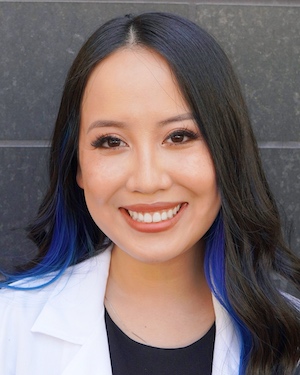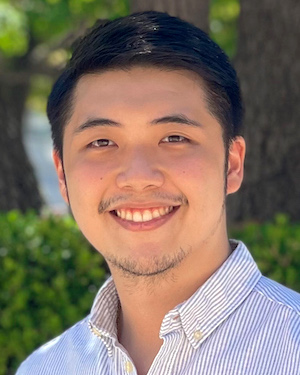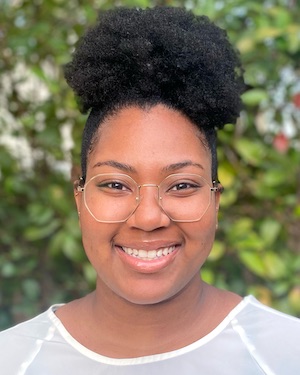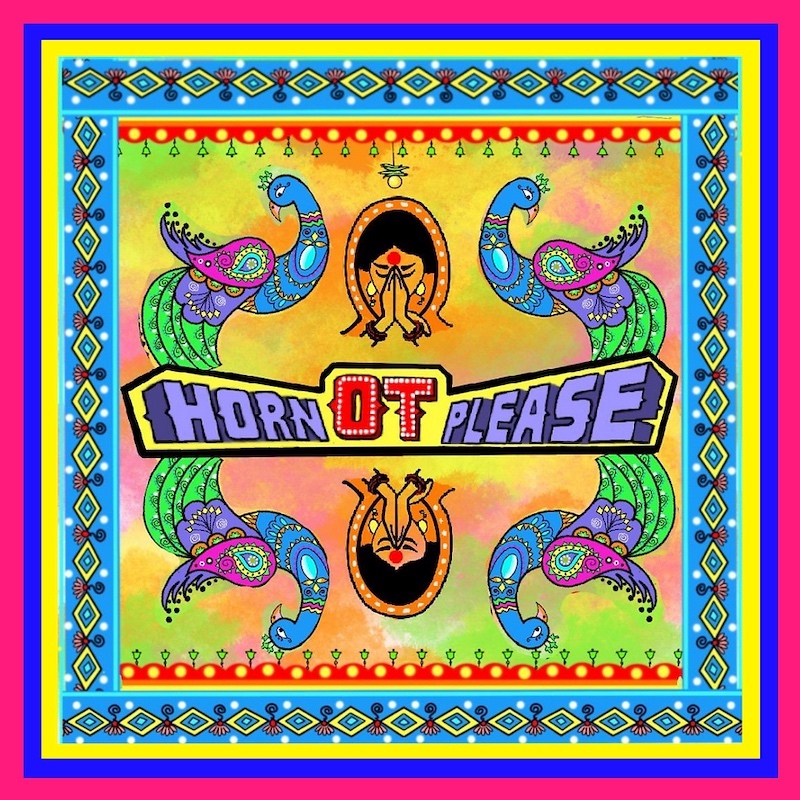Student Blog

WOMEN ⟩
March 26, 2022, by Teresa
That’s it. That’s the post.
As Women’s History Month comes to an end, I’ve been reflecting on all the women who’ve helped shape me into the woman I am today while I learn how to use my voice for all the women to come. Here are some of them:

From left to right: Daniela, Michelle, Miranda, myself, Maggie, Denisse, Emily, China, Lizzo
Over 75% of occupational therapists in America are women and I can’t wait to become one of them. To enter a profession filled with such intelligent, warm, compassionate, and beautiful individuals such as the ones pictured alongside me here always reassures me that I followed the right path. Both in and out of the classroom, I learn so much from their strength, resilience, and experiences. With all of us being at Chan at the same time and learning from our professors who are some of the most powerful women I’ve encountered in this profession, we are constantly challenged to grow into our power as well.

Top row from left to right: Michelle, Yuka, Courtney, Ann, Connie
Bottom row from left to right: Joan, myself, Kristine
From middle school to undergrad, I’ve found lifelong friends along the way and I am so proud of the women we’ve become and are on our way to becoming! It’s extremely empowering to see my friends achieving their goals and doing the things we talked about growing up. I love hearing their stories about their respective fields — marketing, medicine, accounting, nursing, business, social work — and only hope they feel the same whenever I talk about OT. At this point, I’m pretty sure they could give you a pretty good definition of what occupation is 😉 Whether it be moving across the country to start a new job, going to graduate school, or buying a home, I love to see my favorite women succeed. It motivates me to work toward my dreams as well, so that we can all celebrate our wins together. #WomenPostingWs

Me, my sister, Kim (USC Price MHA ’16), and our nieces manifesting Fight On ✌️ for me at my graduation from UCLA in 2018
Last but not least, there’s all the women in my family who have played a crucial role in who I am. Coming from a family of refugees and immigrants, obtaining degrees from all these fancy universities sometimes feels . . . snobby, even though it’s the very reason they came here – better opportunities for those who came after, for me. I think about this a lot and even more so once I became an aunt to two beautiful girls. While the strength, resilience, and sacrifices of my grandma, mom, aunts, and sisters have shaped who I am, my nieces help shape the woman I want to become.
When taken together, I am reminded of the complexities of being a woman, the many roles and expectations it comes with (both good and bad), and how this experience becomes further convoluted by things out of one’s control, including gender identity, being BIPOC, and the imposition of traditional gender roles. When I think about my own intersectionality, it is in relation to a new skill — learning how to use my voice to take up space. Growing up, I was told to become the docile, hardworking, obedient Vietnamese girl I was meant to be. As the youngest daughter, my thoughts often came last and my opinions were seldom considered as a serious contributor to the conversation. So as I grew into womanhood, being told that my voice mattered felt unnatural sometimes. It can still be difficult to organize my thoughts and convey them as a seamlessly delivered statement, without anticipating being silenced. I still haven’t figured out the surefire way to rectify this, but I do know how empowering it is when I use my voice and have folks right there alongside me, listening and lifting. I’d like to leave you with a poem I admire; it is my hope you use it to uplift the voices of all the women in your life, this month and every month until the end of time.
Hear me as a woman.
Have me as your sister.
On purpled battlefield breaking day,
So I might say our victory is just beginning,
See me as change,
Say I am movement,
That I am the year
And I am the era
Of the women.
“Won’t You Be My Sister?”
by Amanda Gorman
⋯

Where Did the Time Go? ⟩
March 20, 2022, by Marvyn
Life Hacks School/Life Balance
And just like that Spring break is over. Have you ever wondered where the time went? It feels so elusive but also always so present. At one point you feel like you have had an abundance of it, but now it feels like I have so little time.
I remember back when I started in the Post-Professional Master’s program last August, my mind was comforted by the fact that I have a lot of time to spend in this program and that I will have so much to learn and experience. But while the latter remains to be true, I feel like I am now running out of time. It feels like I just landed in Los Angeles yesterday but here we are. The one year has already flown by and we are already in the last few stretches before commencement! What is this sorcery??

My first ever visit to USC Chan!
Can you find your time back?
All my life I knew time was precious. If you knew me, I have had a love-hate relationship with time. Every time someone asks me, “If you gain a superpower, what would it be?” My response will always be to be able to control time. I find that whenever I feel like I’m chasing after time and making the most out of my experience here at USC, I find myself creating the best memories. You have this sort of pressure to do the best and to feel the best. At least, that’s how I see it personally. Maybe, as you read this, you feel kind of the same way too! But there is also a part of me that wishes I had more time, that I can freeze/rewind and do more. Could I ever find more time?
Look back. Reflecting on your experiences in the past is your own trophy. Whatever you have done and haven’t done, these are the points that you can live by in the present. Personally, I have had the best year of my life being here at USC. I made so many new friends and lifelong connections, and I had the best experiences and memories that I will never trade anything for the world. When I look back at what I have done so far in my time here at USC, I have never been prouder with what I was able to do, and I look forward to what I will be doing in the future.

Making memories with my PP-MA class on our first Friendsgiving! Shoutout to Global Initiatives and everyone else involved!
Living in the present. While it is okay to feel like you’re chasing after time and that you have so much more things you want to do, I’ll use this opportunity to remind myself that I should live in the present experiences and bask in its warmth and joy. I have been so worried about the time I have left and the things I want to do that I forget sometimes to enjoy the things that I currently have! Like everyone says, time is something you never get back. So, while you have it, enjoy it.
Look forward to what’s to come. Now, this might contradict what I have already said but having something to look forward to is a great thing to think about as well. Maybe, in a sense, creating an objective to work towards is beneficial for your time as well! If you think about it, if you have a goal you want to achieve with the “limited” time you have left, it allows you to seize each day with the best memories.
But also, don’t get me wrong, I don’t want to pressure anybody to always do something. Sometimes doing nothing and really taking your time is completely fine as well! There is a fine line between healthily pressuring yourself while keeping your sanity in the midst of every choice you have.
This blog post has been, in a way, cathartic for me because of the current pressure I am feeling with the limited amount of time I have left here in my program. I am comforted by the fact that I have reflected upon my experiences and came up with the three points I mentioned. If you are feeling almost the same way as I have, I hope this helps you too.
⋯

Kayla’s Declassified Spring Survival Guide ⟩
March 8, 2022, by Kayla
Let’s set the tone for this blog. Ready? Close your eyes, picture a perfectly sunny Southern California day, a beautifully organized planner with all of your assignments for the month, a nice cold iced coffee, and a feeling of finally settling into your routine for the semester. Blissful, right? But then you remember, you’re still looking for an external residency site. I don’t know, maybe I was alone in feeling continual stress in the background surrounding finding an external residency during spring semester (but something tells me I probably wasn’t). And something else tells me that you all might be feeling something similar if you are at this point in your journey towards the PP-OTD program.
Luckily, I’ve already been through it so I can share with you some of the things that I learned while reaching out to possible external sites! Tip One: I cannot stress enough is to take the time to sit down and REALLY have a heart-to-heart with yourself and decide what you want out of your residency experience. One of the biggest pieces of advice I can give is to find a residency that speaks to your why. It makes all of the difference when you are reaching out to sites. Not only can they ~feel~ the difference if you are walking in your truth, but I think it will give you more of a confidence boost and help you fall into the right situation! If you seek to find a residency that speaks to your why, I promise, it is so much easier to portray your passion and ultimately, what you will bring to that site as a resident!
Tip Two: Hearing “no”, is okay! In fact, the words “no”, “thank you, however”, and “unfortunately” shaped my spring and summer of 2021. While it was definitely not fun to hear at the time, each time an opportunity didn’t work out, it was just another chance for me to reframe, refine, and re-try! Self-reflection was HUGE for me at this time. I was always thinking about how to make myself stand out as a candidate and refine my elevator speech (oh, the infamous elevator speech) about the PP-OTD program even more compelling and intriguing to potential residency sites.
Segueing into tip three . . . . This is a process of finding an external residency site. I chose those words intentionally, it is a process. For some, it may be quick, for others it may require a little bit more time, but enjoy the process! Enjoy YOUR process.
This last tip, I cannot stress enough. Use your resources! Former residents, program faculty, *cough, cough* yours truly, and literally anything else you can think of. If you have to complete an interview, set up a mock interview. If you have to write personal statements, have your peers and a trusted faculty member look them over and give you feedback. While these opportunities may seem scary or seem like more work at the time, they truly help make us better in the long run. I think this would be a great place to share some wise words from a mentor, “No one has ever been too prepared.”
So, now let’s go back to that scene we set at the beginning. Picture that perfectly sunny Southern California day, your perfect planner, that pristine iced coffee, and that feeling of peace after finally settling into your routine for the semester. But this time, imagine yourself with a feeling of confidence replacing that stress about finding an external residency. Confidence in yourself and confidence in your plan; you’ve got this!
⋯

My Enemies Are After Me ⟩
March 2, 2022, by Teresa
Recently, I watched the stuff on Netflix about fraudsters and all I could think was “Wow, what I wouldn’t give to have their confidence.” Not to get anyone to send me $50,000, but because sometimes, it does feel like my enemies are after me . . . and by ‘my enemies,’ I mean the little voice in my head otherwise known as the “imposter.”
I felt like the biggest imposter ever when I was applying to OT school and when I started this program. If I had to rate my imposter syndrome on a scale of 0 (none) to 10 (worst) around this time, I’d put it at a 10. It was exacerbated both by being waitlisted and being fully remote. As I read the student ambassadors’ blogs, started meeting my classmates on Zoom, and learned from our amazing professors, I was simultaneously romanticizing this image of them in my head – that everyone else was so incredible and had it all figured out while I knew I always felt lost. I’d say I felt this way intermittently throughout my entire first year in the program.
In the past year, it’s resolved a lot. After 12 weeks of level 2 fieldwork, I felt my confidence increase as my competency in skills grew. Once we fully returned to campus last semester, I was comforted by hushed whispers from my peers who shared my confusion during classes. And then came two pivotal experiences this semester which mitigated my imposter syndrome significantly:
- An esteemed faculty member spoke to our class and shared that she still experiences imposter syndrome. That was just mind-blowing to me. There . . . was simply . . . no way? Not with all her achievements, success, and publications. Anyways, in OT, we love evidence-based practice, right? This individual urged us to search in our own history for evidence that we are indeed imposters in order to support the voice telling us we’re not good enough, don’t belong, or not ready for something. Here’s the punch line — you won’t find anything. You’re here at USC, doing the thing you set out to do, against all odds that might have stood in your way. The evidence speaks for itself.
- I heard this advice when I needed it most because it came at a time when I felt like other people were doing the romanticizing thing to me which I had been guilty of doing to others in the past. I had never seen myself as someone worthy enough to be looked up to, so to be placed in those situations felt . . . weird. Anyone who knows me knows that words of affirmation make me uncomfortable, which is something I am actively working on receiving better because it’s not me rejecting kind words, it’s the imposter. I want to see myself the way others see I have the potential to be, not in the distorted way the imposter tries to convince me of.
Going back to the baseline established at the start of this blog (which – you guessed it – we LOVE in OT), I’d say I now teeter around maybe 2 or 3. I entered “imposter” into the search bar on our website out of curiosity to see how I should frame this blog post and it returned ten blog hits from ambassadors past and present. They each approach it from a different perspective, which shows how pervasive imposter syndrome can be when you find yourself in a new or different environment that you’re not used to. But I think this also means you’re putting yourself in situations that challenge you to learn things you didn’t know before, experience growth throughout your life, and continue to prove people wrong, including that imposter telling you you’re a fraud. Sometimes, I hope I never rate my imposter syndrome at a 0 out of fear that it will indicate I’ve reached a threshold in my learning. Anyways, what I’m trying to say is you aren’t alone in this feeling. It can be difficult, but try not to compare yourself and your journey to others because we are only able to see what they choose to present to the world. Just give it some time. Both your confidence and competence will increase and with that, maybe you’ll learn to befriend your ‘enemies.’
⋯
A spicy podcast from the land of spices! ⟩
March 1, 2022, by Global Initiatives Team
By Prutha Satpute, OTD USC alumni; Cohost and editor of HOTP
By Sakshi Tickoo, BOTh, Personal Counselor; Cohost and PR head of HOTP
By Varada Pisharody, MsOT, OTR/L; Cohost and CEO of HOTP
Editors Brittany Inouye and Abraham Ramirez
Entry-Level Professional Master’s students

Who are we?
We’re the three best friends
that anybody could have
We’re the three best friends
that anybody could have
And we’ll never ever ever ever
leave each other!
We are three OTs from India, who are at different phases in our (professional) lives, with three completely different personalities, living in 3 different time zones (east coast, west coast, and India). Regardless of these differences we have one thing in common — our love for each other and what we do.

We decked up for a long-distance photoshoot for the launch of the podcast. For more details on who we are check out our website: hornotplease.com
What do we do?
Well, throughout our Bachelor degree years we found ourselves within the grasp of knowing what OT was but never really being able to pinpoint how the core values and fundamentals of our profession related to the everyday lives of people. At the same time, when we would watch Netflix shows or social media trends, we would find these amazing links back to the things we were learning in our textbooks about environmental context and human behavior. The more evidence we found of such links, the more we felt the need to create a platform that would appeal to the minds of OTs who were tired of their mid 20th century Western world-view textbooks. So, in June 2021, we founded Horn OT Please — a student friendly podcast that uses Occupational Science as its backbone to understand OT practices, values, and principles with the help of modern-day educational perspectives. Horn OT Please ended up being the first ever Indian OT podcast available on all listener platforms; this was not only special but it added to the sense of value and responsibility for the work we are doing. So, every week despite our busy schedules and unkind time zone differences (I complain because I wake up at 7am on a Saturday!) we hop on Zoom to study, research, and record our sessions. We try to cover a wide range of topics like:
- Student life
- Ups-downs, perks-disappointments, joys, and wonders of being an OT
- What is OT education like in India and other countries?
- OT Education
- Reforms in OT books and teaching methods
- OT soft skills
- Prepping for the big scary world
- OT Practice
- Non-traditional settings, areas of practice, and interventions
- Personal anecdotes
How do we do it?
Simply reading words on paper did not challenge us to think critically in a client-specific scenario. On the other hand, watching the Oscar winning movie ‘The Father’ gave a visual, auditory, cognitive, mental, and emotional character to the signs and symptoms of Alzheimer’s, making it more real and relatable. We are constantly in search of narratives and stories fictional/non-fictional that can act as a medium for learning and understanding OT concepts. We use scientific manuscripts, journal articles, movies, documentaries, history, art, trends on Instagram, TikTok, and other non-traditional media to blur the line between academic and non-academic learning materials.
Why do we do it?
Because we can. For a long time we waited for OT professionals who could answer our questions and make sense of our fanatical ideas. As the three of us have started diverging into different practice areas and settings, our inquisitiveness has only led to more questions that remain unanswered. Horn OT Please is our safe haven. And we hope that it becomes a space where disparate worlds of thought can come together; challenging OTs globally to think outside the box, and further advance our profession.
If you have any questions or would like to know more you can reach us through our socials — email: .(JavaScript must be enabled to view this email address), Instagram: @hornotplease, website: hornotplease.com.
⋯






